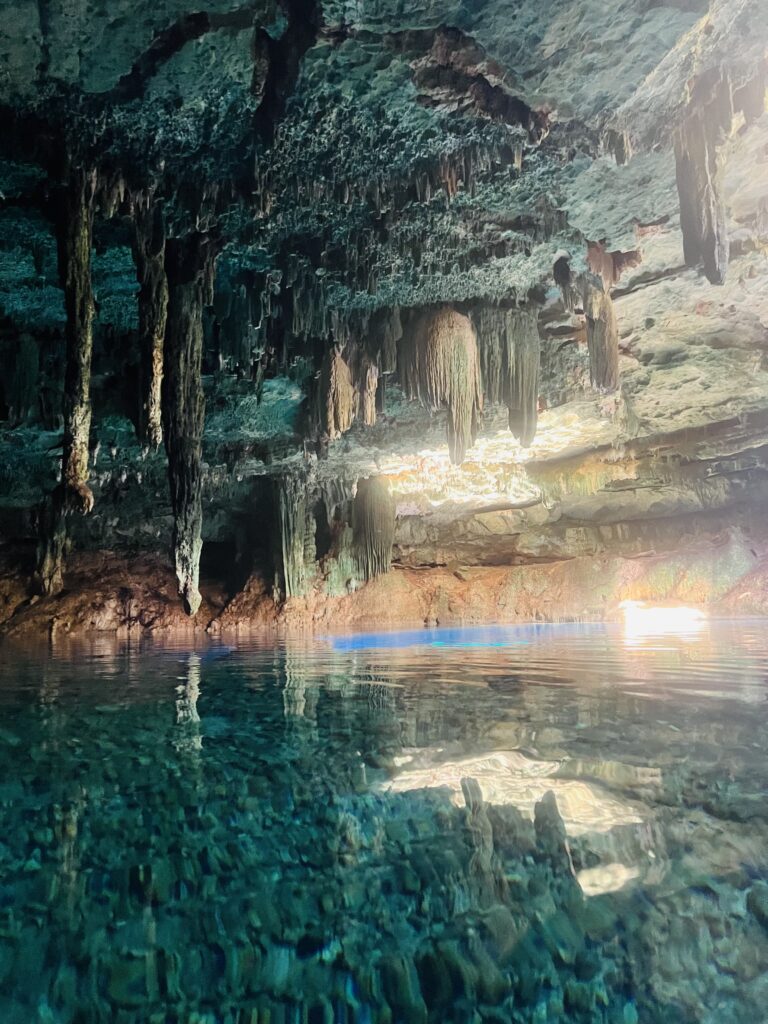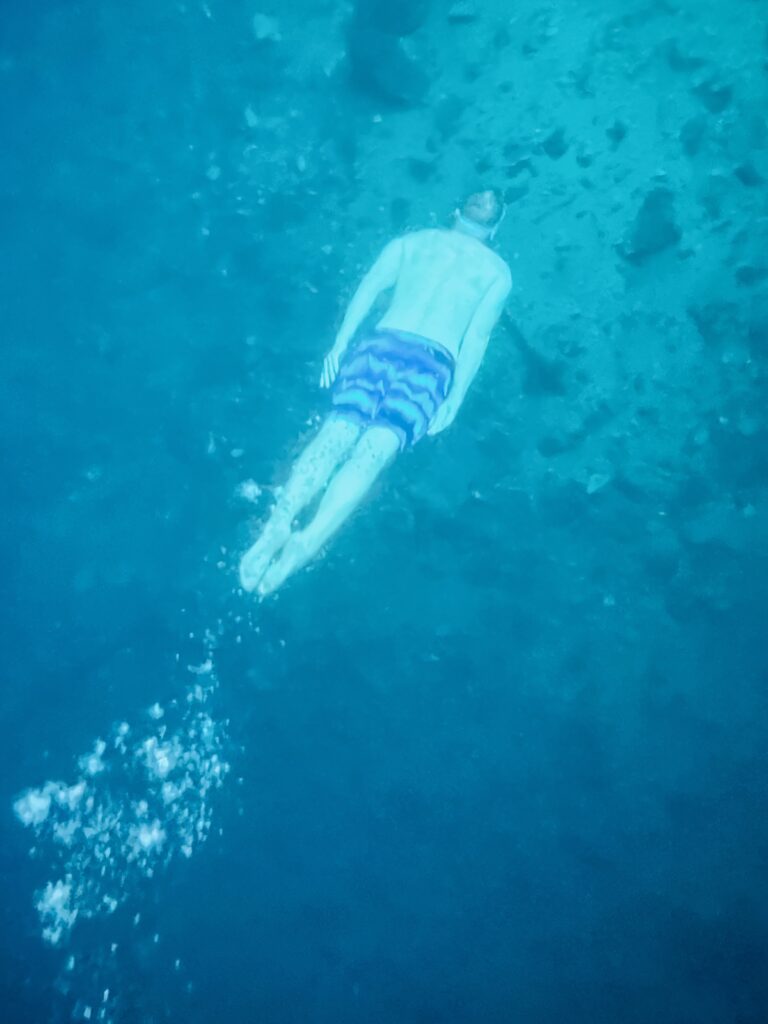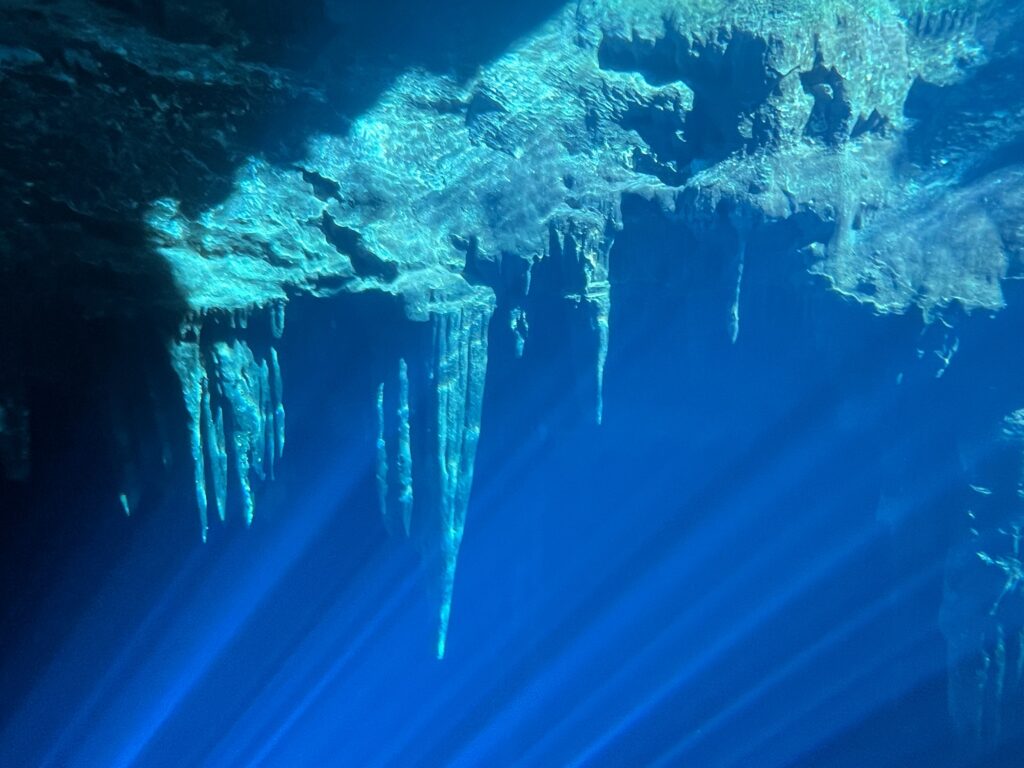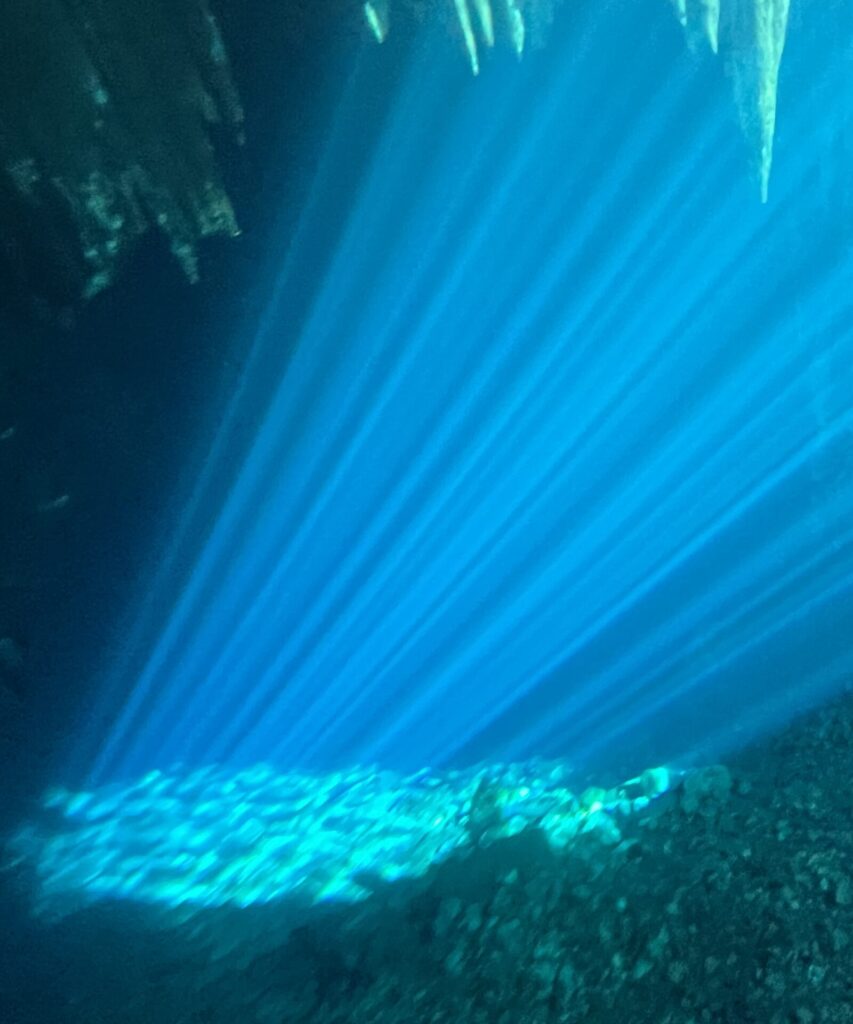There are no above ground rivers in Yucatán, MX but there are over 6000 fresh water sinkholes or cenotes 😉 It is believed that the dinosaur killing astroid that impacted the earth bazillions of years ago, happened here & created the Chicxulub Crater. As the Earth rose up from the crater impact, the surface waters were sent underground into a labyrinth of limestone caves creating the Ring of Cenotes. We didn’t visit many in the end, mainly because the first one was so amazing & we had it all to ourselves. I just wasn’t sure any other could compare.
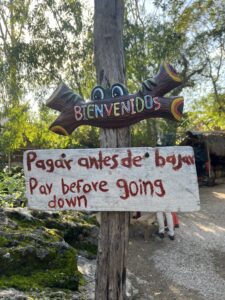
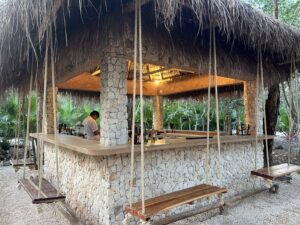
Some cenotes are on private land, where local residents charge a small price, $20 pesos to get in & maybe also offer a snack stand & bathroom.
Some cenotes have been built up into much larger parks containing multiple other cultural experiences like a chocolate ceremony, being blessed by a Mayan priest or a swing up bar 😂
Still, others have yet to be discovered which is a real concern as progress makes its way through this precious landscape via the Maya train. Mexican geologists are racing against time & track laying to discover & map as many cenotes as possible, for both their cultural & environmental significance.
Culturally, a cenote would have been the main water source for a Mayan community. The Mayan knew to look for a specific kind of tree which meant an underground water source was nearby, making the land in this area more fertile & sustainable for a village.
Environmentally, cenotes are still a vital water source for the Yucatán peninsula. There is great concern that as progress rolls through, these underground rivers will be contaminated or worse, the delicate terrain above them will simply collapse.
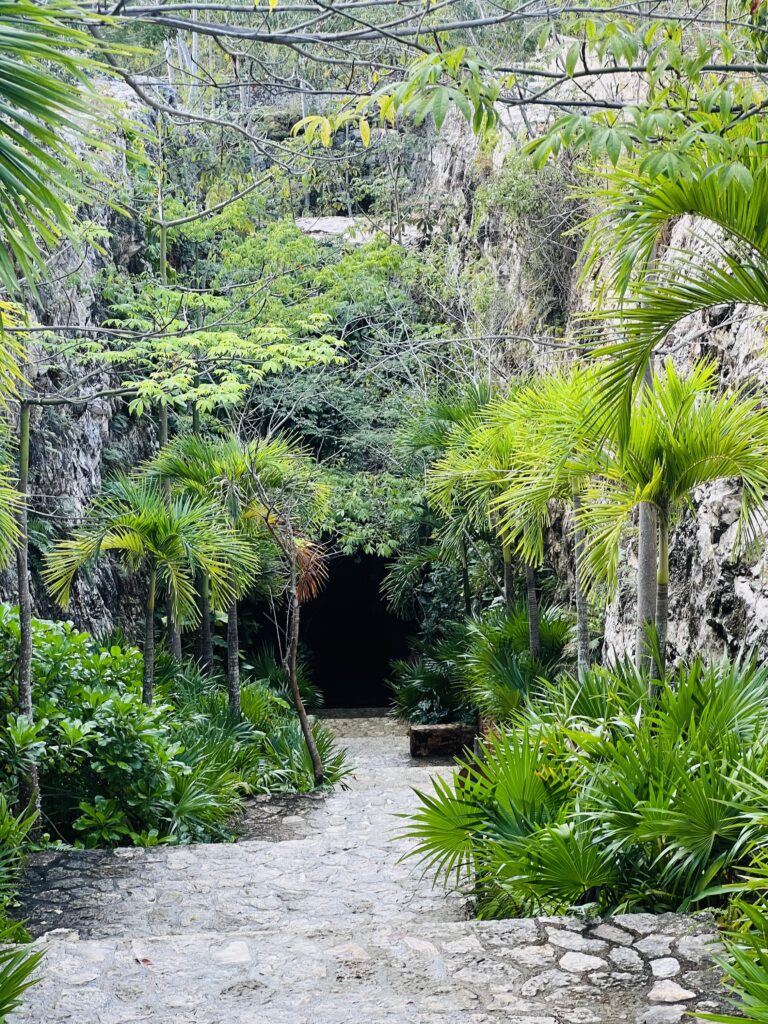


Cenotes are exclusively found in the Yucatan Peninsula (in Mexico), Belize & Guatemala, where the soil is porous & soft limestone, which allowed rainwater to seep in & create an underground system of rivers called the Sac Actun System. The largest underground river system in the world, located along the Mexican Caribbean, connects all the cenotes.
The life cycle of a cenote is unpredictable. There are open cenotes, partial cenotes & completely underground cenotes. Some were once moist caves growing stalagmites & stalactites that one day or over a thousand years flooded with water. Others, once flowing, dried up.
Visit one, visit them all (well good luck with that) you could certainly spend a day cenote hopping in one general area. Bring a mask & snorkel 🤿 but keep your eyes peeled for Tsukán, the guardian & protector of the sacred waters 🌊
